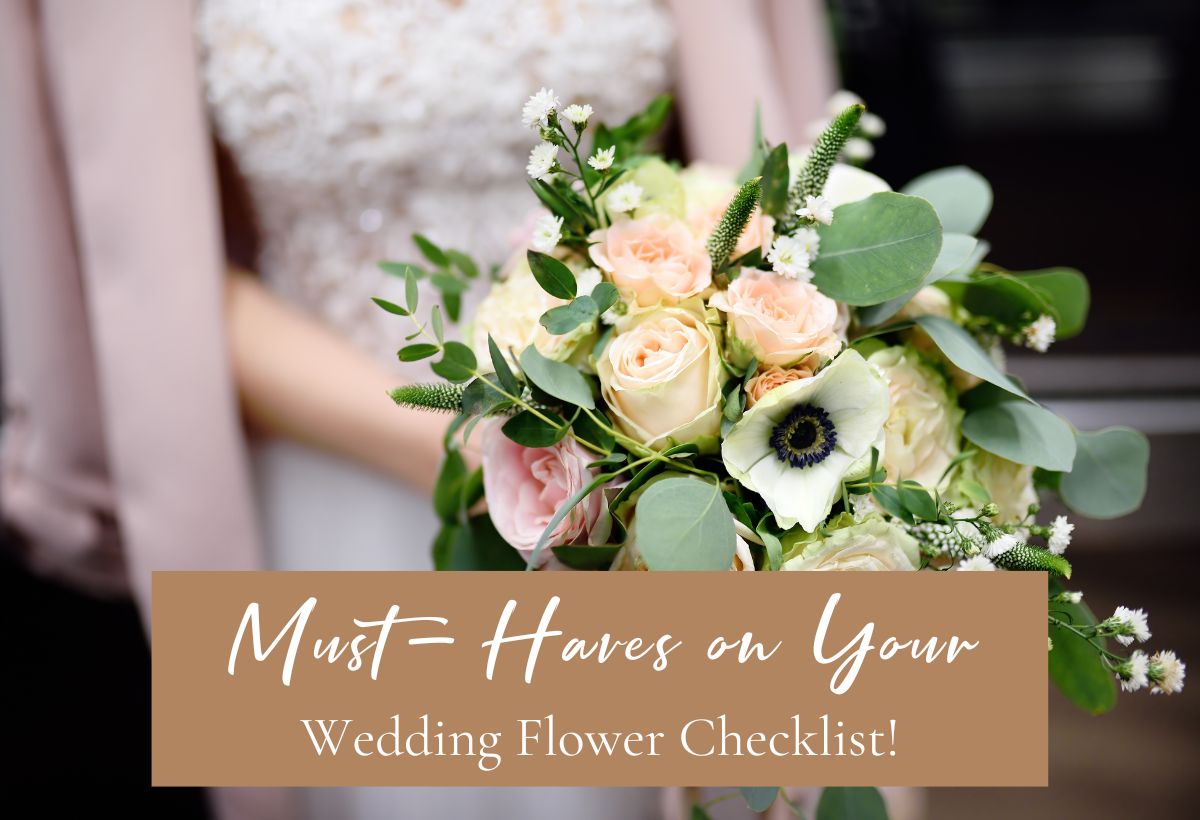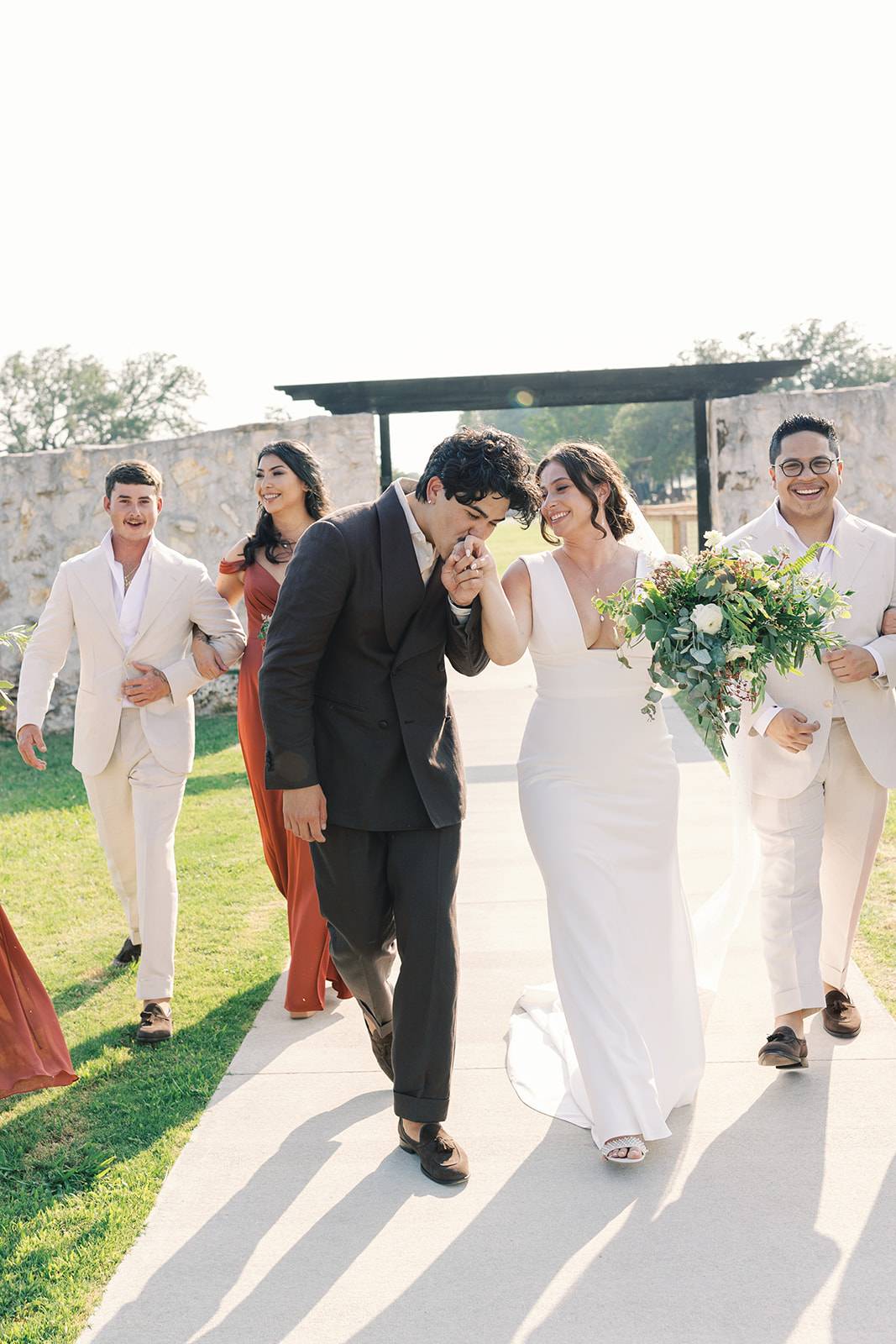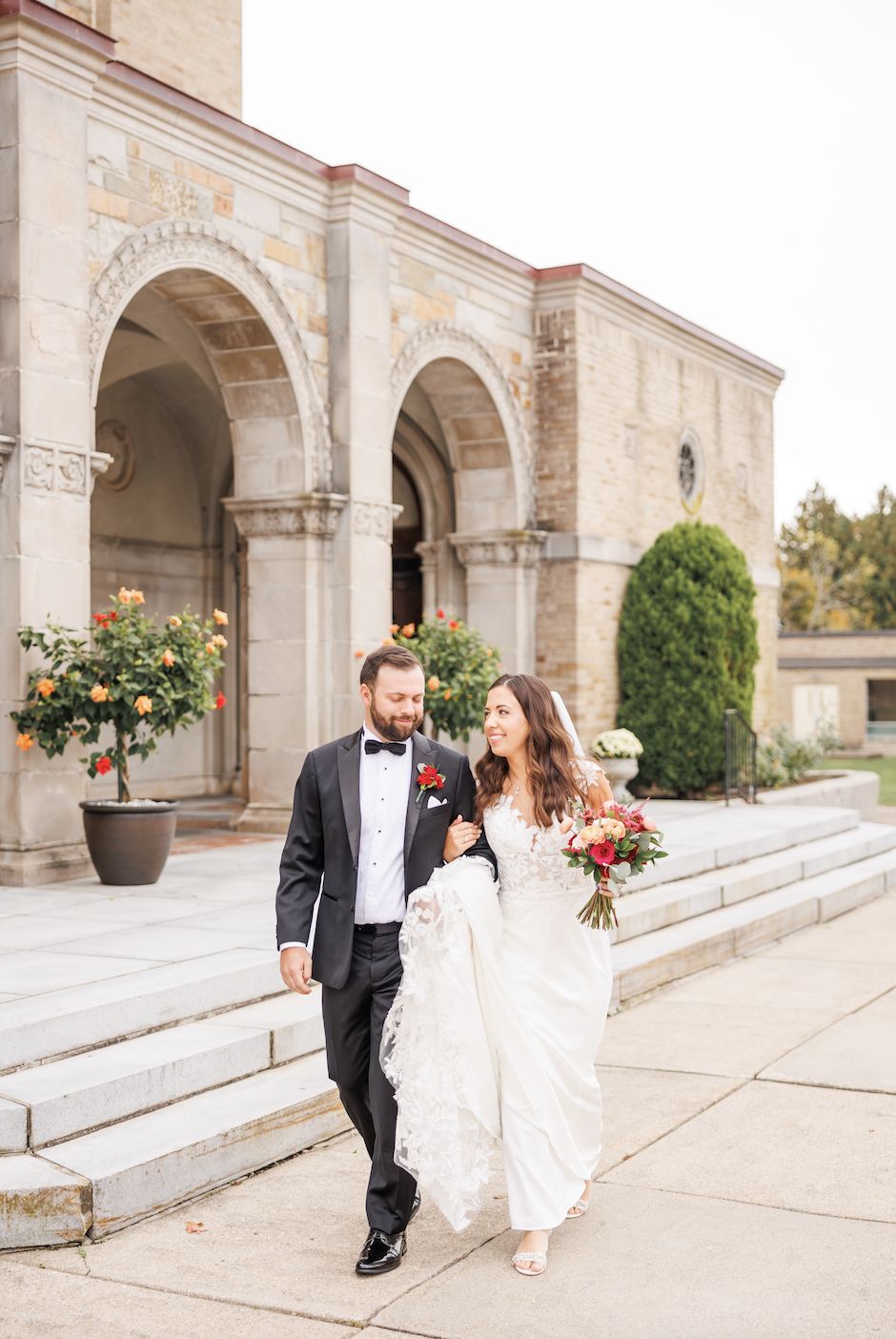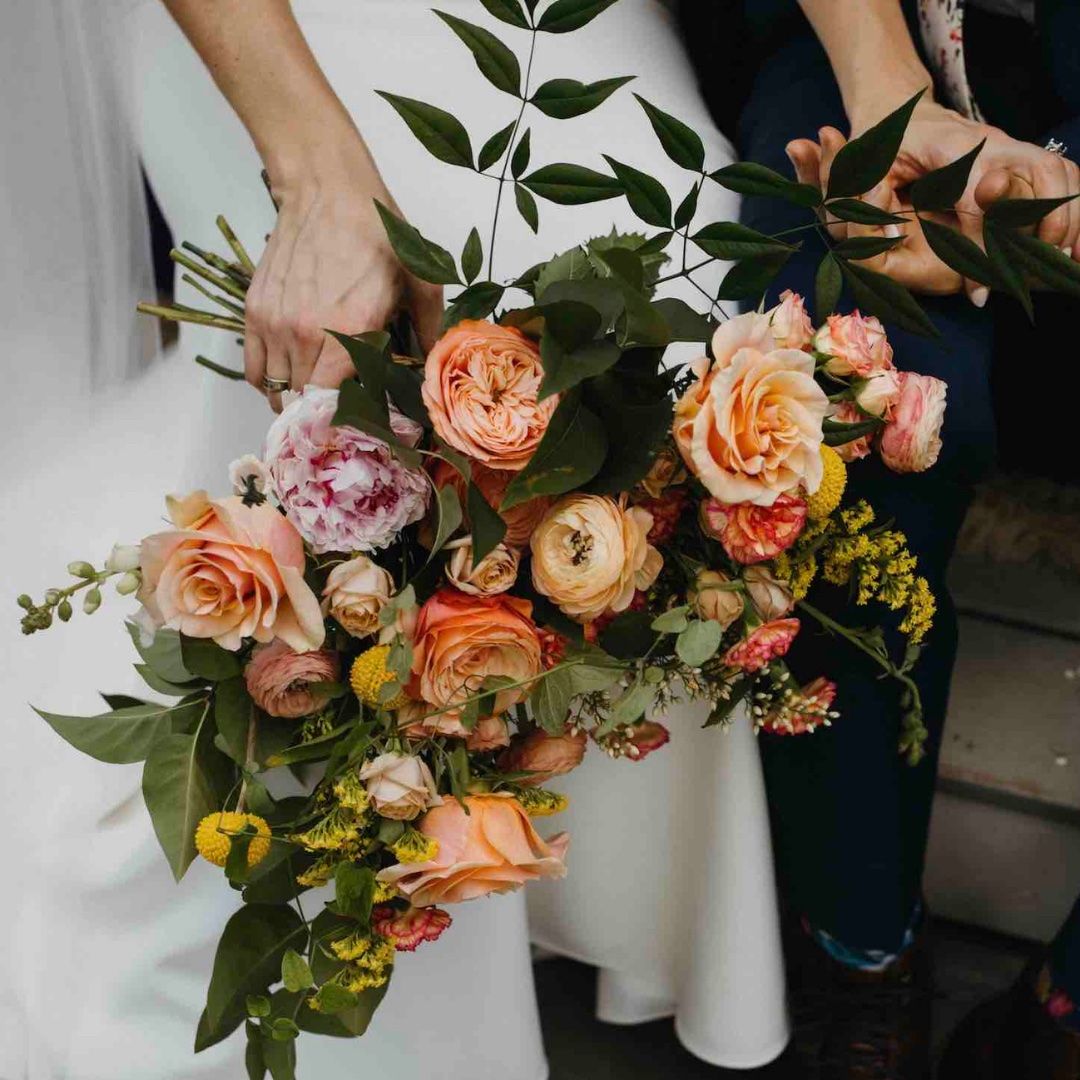
One of the most significant aspects of a wedding is the floral arrangements. From the bridal bouquet to the ceremony venue, flowers are a crucial part of creating a beautiful ambiance for your special day. Creating the perfect floral arrangements requires careful planning and coordination.
This comprehensive checklist will guide you through the process of selecting and coordinating the ideal floral arrangements for every part of your wedding day. So, whether you’re looking for stunning centerpieces for your reception or a bridal bouquet that complements your dress, our guide has got you covered.
Let’s dive in to explore everything you need to know about wedding day flowers and floral arrangements.

1.Defining Your Budget for Wedding Flowers
Wedding flowers are a beautiful and integral part of any wedding day, but they can also be expensive. That’s why it’s essential to set a reasonable budget before diving into the world of floral arrangements.
Start by discussing your overall budget with your partner and deciding how much of it you want to allocate towards wedding flowers. It’s essential to keep in mind that the cost of flowers can vary depending on the season, flower type, and the florist you choose.
Research local florists and ask for their pricing options to get a better idea of what you can afford. Make a list of the essential floral arrangements you need, such as the bridal bouquet, bridesmaid bouquets, and ceremony and reception decorations. Once you have an idea of what you want, you can ask your florist for a more accurate estimate.
Remember to keep an open mind and be willing to make compromises if necessary. Instead of opting for expensive exotic flowers, consider using more affordable options that are just as beautiful. Also, consider using more greenery or foliage, which can be a cost-effective and stylish alternative to blooms.
With careful planning and research, you can set a reasonable budget for your wedding flowers and still have stunning floral arrangements that will make your special day even more memorable.
2.Picking the Perfect Petal Professional
In the world of wedding flowers, selecting the right florist is a critical decision. The right florist should have the skills and experience to bring your floral vision to life while working within your budget. To choose the perfect wedding florist, start by doing your research. Look for florists who specialize in wedding flowers and have extensive portfolios with examples of their work.
Once you have a list of potential florists, schedule consultations with each one. During these consultations, ask the florist about their design process and how they work with couples to create their floral arrangements. Be sure to discuss your budget and timeline as well.
When you find a florist who understands your vision and can work within your budget, ask for a proposal outlining the details of the floral arrangements they will provide. Review the proposal carefully and don’t hesitate to ask questions or request changes if needed.
Ultimately, choosing a wedding florist is about finding someone who you can trust to create beautiful and meaningful floral arrangements for your special day. With these tips, you’ll be well on your way to finding the perfect wedding florist for your unique style and vision.

3.Selecting the Perfect Wedding Bouquet
A bride’s bouquet is a crucial aspect of the wedding ensemble, as it complements the bridal look and adds a touch of elegance. When choosing the perfect wedding bouquet, there are several factors to consider.
Firstly, consider the style of your wedding gown, as well as the wedding theme and color palette. A classic bouquet of roses or peonies enhances a traditional bridal look while a modern bouquet of orchids or calla lilies works well for a contemporary dress.
Secondly, consider the shape and size of the bouquet. A cascading bouquet looks stunning with a ballgown, while a compact round bouquet works well with a fitted dress. The size of the bouquet should also be proportional to your body frame.
Lastly, consider the season and availability of the flowers you want. For example, if you’re getting married in the summer, choose flowers that thrive in hot weather such as dahlias or sunflowers.
With these tips in mind, you can confidently choose the perfect wedding bouquet that reflects your style and personality.
4.Coordinating Bridesmaid Bouquets
Bridesmaid bouquets are an essential element of the bridal party’s overall look. To ensure that the bouquets complement the wedding theme and the bride’s bouquet, coordination is key.
One option for coordinating bridesmaid bouquets is to use the same flowers as the bride’s bouquet, but in a smaller arrangement. This creates a cohesive look that is visually stunning. Another option is to incorporate similar colors and textures to the bride’s bouquet. This allows bridesmaids to have their unique bouquets while still coordinating with the bride.
When selecting bridesmaid bouquets, consider the overall aesthetic of the wedding. For a classic or formal wedding, a traditional bouquet shape such as a round or cascading arrangement may be best. A more modern or rustic wedding may benefit from a looser and more organic bouquet shape. The type of flowers and greenery used can also impact the look and feel of the bouquets.
In addition to the bridesmaid bouquets, other wedding party flowers can be coordinated to create a cohesive look. Boutonnieres and corsages can be created using similar flowers and colors as the bridesmaid bouquets. This helps tie the entire wedding party together visually.
Ultimately, the key to coordinating bridesmaid bouquets is to keep the bride’s vision in mind while creating unique arrangements that reflect the bridesmaid’s personality. With attention to detail and thoughtful selection, the bridesmaid bouquets can enhance the overall beauty of the wedding.

5.Decorating the Ceremony Venue
The ceremony venue sets the tone for your big day, and selecting the appropriate ceremony venue flowers and decor is crucial to bring your vision to life.
When it comes to your altar flowers, consider the location and the style of your ceremony venue. If you’re getting married in a church, an altar arrangement with large blooms, such as hydrangeas or roses, can create a breathtaking focal point. For outdoor ceremonies, consider incorporating natural elements, such as bouquets of wildflowers, to complement the natural beauty of your surroundings.
Pew decorations can also add a touch of elegance to your ceremony. Simple yet sophisticated arrangements of greenery and soft-hued blooms can adorn the aisles and create a romantic atmosphere.
Bringing in elements of personal significance, such as family heirlooms or favorite flowers, can make your ceremony venue even more special. Work with your florist to incorporate these details in a subtle yet meaningful way.
With the right ceremony venue flowers and decor, you can create a stunning backdrop for your unforgettable wedding ceremony.
6.Enhancing Your Reception with Floral Centerpieces
Just as flowers can elevate the beauty of your wedding ceremony, they can also do the same for your reception. The reception is where you and your guests will unwind and enjoy the festivities, so it’s essential to have the right floral centerpieces and arrangements to bring the space to life.
There are a plethora of options available when it comes to reception flowers. You can choose from tall and elegant floral centerpieces, low and lush arrangements, or even eclectic and bohemian styles. Keep in mind the theme and color scheme of your reception when deciding on the right floral arrangements for your tables.
Aside from floral centerpieces, there are other ways to incorporate reception flowers into your wedding decor. For example, you can add blossoms to your wedding cake, opt for floral linens, or even hang fresh flower garlands on the walls.
Whatever your preference, be sure to discuss your vision with your wedding florist beforehand. They can offer suggestions and creative ideas that suit your style and budget.
With the right floral touch, your reception will come alive and create a beautiful, memorable experience for you and your guests.

7.Adding Floral Touches to Other Elements
Flowers can be the perfect touch to tie together all elements of your wedding day. Incorporating them into boutonnieres and corsages can create a cohesive look throughout your bridal party. To add a pop of color to your reception, consider floral touches on your wedding cake or on the tables as part of your centerpieces.
Using flowers to enhance other wedding details doesn’t have to be limited to just these elements. Get creative and utilize floral details in unexpected ways, such as decorating your wedding arch or incorporating them into your wedding favors.
When incorporating floral touches, it’s essential to choose the right type of flower and color scheme to complement your wedding theme. Working with your florist to coordinate all of these details ensures that every element of your wedding day is beautifully tied together.
Conclusion
Flowers play a significant role in making your wedding day unforgettable. With the right floral arrangements, you can create a beautiful and romantic ambiance that reflects your unique style and personality. By following the essential checklist we’ve provided, you can choose the perfect wedding flowers that capture the essence of your love story.
Whether you’re planning for a rustic countryside wedding or a lavish city celebration, the right florist can help you bring your dream wedding flowers to life. Remember to set a budget that works for you and to coordinate the floral arrangements to complement the overall wedding theme.
From bridal bouquets to bridesmaid posies, ceremony venue flowers, and reception centerpieces, well-coordinated wedding flowers can enhance the overall ambiance of your special day. So don’t hesitate to add floral touches to your wedding elements, such as boutonnieres and cake decorations, and make your wedding day a truly unforgettable experience!
Comments are closed.